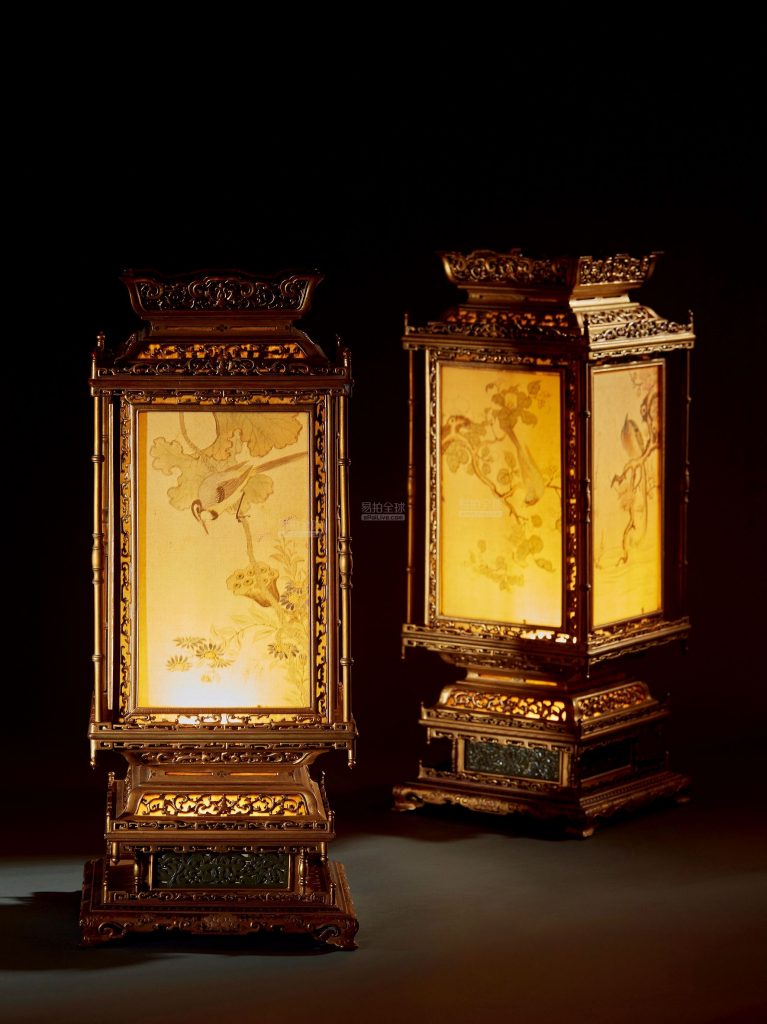In his book XiJinZhiJiYi, the late Yuan-dynastywriter Xiong Mengxiang described the activities of Beijing residents on the Yuan xiao Festival.In the old days lanternfairs in Beijing started on the 8th,culminated on the 13th and ended on the 17th of the first lunar month. Celebrations took place everywhere in the imperial palace and the city’s streets.
元末熊梦祥所著的《析津志辑佚》中记载了都城北京的市民过元宵节的情况。当时北京的灯节活动从农历正月初八开始,至正月十三进入高潮,到正月十七才结束。从皇宫到民间街巷皆十分热闹。
It is said that the day to worship gods of stars was the 8th when families lit lanterns at night to welcome them to descend to earth. This ritual required 49 or 108 flower-shaped lanterns made from bast-fiber paper.The lanterns were lit between 7 and 9o’clock in the evening after incense and food offerings were placed on the table.
据说正月初八为祭星神的日子,这天晚上,诸星下界,因此各家燃灯为祭。灯是以棉纸拈成花形,蘸油点燃。灯数有四十九盏或一百零八盏。初更(即晚上七点至晚上九点)时摆设香案,陈列祭品,将灯点燃后开始祭拜,称为“顺星”。
From the 13th to the 16th families lit all lanterns in their rooms and outside the frontgate.This custom was known as“scattering lantern flowers”or“scattering small people”to repel evilspirits and bad luck in the new year.
正月十三至十六,各家由内室到大门,燃灯照明,称其为“散灯花:”也称“散小人”,有解除不祥之意。
In old Beijing, lanterns were also displayed during other festivals such as red lanterns for the Dragon Boat Festival,
sky lanterns on the no-wind day in June,lotus lanterns on the 15th of the seventh lunar month,jade rabbit lanterns on the 15th of the eighth lunar month and Kong ming lanterns again on the 9th of the ninth lunar month.
旧时的北京,不止在正月十五挂灯笼,其他节日也有这个习俗:五月端午挂红灯,六月无风放天灯,七月十五莲花灯,八月十五玉兔灯,九九重阳孔明灯。
Lantern fairs became very popular in Beijing involving many commercial and celebration activities. In the Ming Dynasty,a special zone was setup for displaying lanterns outside ofthe East Prosperity Gate(Dong hua Men) where common people,merchants or officials could sell or buy lanterns. The area turned into a flourishing commercial district known as the Lantern Fair Crossing with bustling markets during the day and festive lantern displays at night.

由于北京的灯节活动和商业交易相结合,故又称“灯市”。明代时,北京的灯市就已十分活跃。北京东华门外开辟专区悬灯,无论普通百姓还是商贾、仕人都可制灯彩并进行贸易,故形成了一条繁华的商业街,因灯市而被命名为“灯市口”。这里白天是繁华的集市,夜晚就变成了欢乐的灯会。
In the late Qing Dynasty, the art of making palace lanterns gradually evolved into a type of folk art in Beijing. As lanterns became necessary decorations for important Chinese holidays,many lantern making workshops and lantern street vendors sprang up.
清朝末年,曾经作为皇宫灯彩的宫廷灯彩艺术,逐步成为具有北京特色的民间灯彩。灯彩增添了节日的喜庆气氛,是重要节日必不可少的角色。随之出现了许多制作灯彩的作坊和挑着灯笼吆喝的街头小贩。

As early as in the Tang Dynasty palace lanterns were already considered typical Beijing lanterns. The Ming Dynasty had a grand show-off of palace lanterns from the 24th of the twelfth lunar month to the Yuan xiao Festival in the new year.
宫灯是北京灯彩的代表,唐代时就已盛行。明代时,农历腊月二十四至元宵节,宫中都要大悬宫灯。
During the Yongle Period of the Ming Dynasty,the Ming imperial court had a big turtle-shaped lantern structure built
at the Meridian Gate(Wu Men) and all imperial court ladies were asked to wear dresses of lantern motifs. The oldest
palace lanterns in the Beijing Palace Museum collections were made in the Ming Dynasty.
明永乐时还曾于午门大立鳌山灯柱,宫女们穿上印有灯影图案的服饰。现存最早的宫灯为北京故宫博物院收藏的明代制品。
Beijing palace lanterns have a total of 250 styles divided into two main categories:hexagonal-shaped lanterns passed down from the Ming and Qing dynasties and flower lanterns transformed from hexagonal lanterns with carved, inlaid, engraved or painted designs.
北京的宫灯有250多个品种,主要有“六方宫灯”,这种灯有六个对称的面,其造型结构是从明清两代流传下来的。还有一种“花灯”其造型是由六方宫灯演变而来,需要用到雕、镂、刻、画等工艺。
